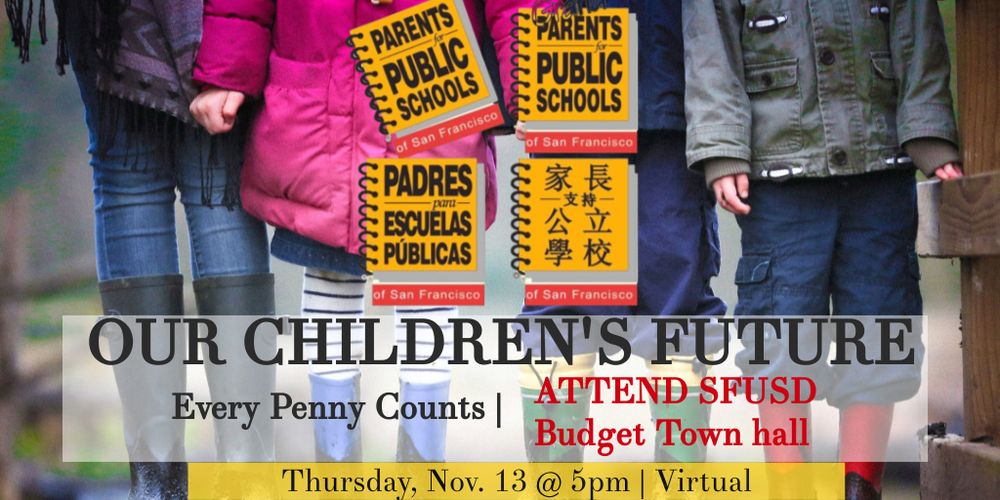
FOR 26 YEARS, PPS PROMOTES THE FUNDAMENTAL VALUE OF PUBLIC EDUCATION
Visit Our Website: www.ppssf.org
Donate now: donorbox.org/healinghearts
#SpreadLove #HealingHearts
bit.ly/PPSSFHEALING...

Donate now: donorbox.org/healinghearts
#SpreadLove #HealingHearts
bit.ly/PPSSFHEALING...
Donate now: donorbox.org/healinghearts
#SpreadLove #HealingHearts
bit.ly/PPSSFHEALING...

Donate now: donorbox.org/healinghearts
#SpreadLove #HealingHearts
bit.ly/PPSSFHEALING...
Donate now: donorbox.org/healinghearts
#SpreadLove #HealingHearts

Donate now: donorbox.org/healinghearts
#SpreadLove #HealingHearts
Help us shape the future by sharing your thoughts through our survey. Your feedback is invaluable in guiding our decisions and improving our community. Click the link to participate: us15.list-manage.com/survey?u=0f2...
Thank you for your input! 🙌#Community

Help us shape the future by sharing your thoughts through our survey. Your feedback is invaluable in guiding our decisions and improving our community. Click the link to participate: us15.list-manage.com/survey?u=0f2...
Thank you for your input! 🙌#Community


The SFUSD Board of Education currently has an NOT MET grade for Values of the Community.
Why does it matter? Because skipping a full, open Superintendent search sidelines the voices of students, families, educators, and community members.
#build #trust #publicschools

The SFUSD Board of Education currently has an NOT MET grade for Values of the Community.
Why does it matter? Because skipping a full, open Superintendent search sidelines the voices of students, families, educators, and community members.
#build #trust #publicschools
We'll highlight key agenda items including the CAC appointments, language and literacy goals, math milestones, and the SFUSD superintendent contract.
Your voice matters—share your questions and ideas!
#PPSSF

We'll highlight key agenda items including the CAC appointments, language and literacy goals, math milestones, and the SFUSD superintendent contract.
Your voice matters—share your questions and ideas!
#PPSSF
In 2025, our students made meaningful strides:
📉 Chronic Absenteeism: Decreased by 3.1%, moving higher within the ORANGE ➜ toward YELLOW color grade!
📚 English Language Arts: Increased by 11.4%, rising within the YELLOW range!! ✨
#PublicSchoolLove

In 2025, our students made meaningful strides:
📉 Chronic Absenteeism: Decreased by 3.1%, moving higher within the ORANGE ➜ toward YELLOW color grade!
📚 English Language Arts: Increased by 11.4%, rising within the YELLOW range!! ✨
#PublicSchoolLove
In 2025, our students maintained an incredible 0% suspensions — all while shining brightest in our highest color grade, BLUE! 💙
And that’s not all… Our science stars increased by 6.7%, moving up to the cheerful color YELLOW! 💛
#BretHarte #PublicSchoolLove

In 2025, our students maintained an incredible 0% suspensions — all while shining brightest in our highest color grade, BLUE! 💙
And that’s not all… Our science stars increased by 6.7%, moving up to the cheerful color YELLOW! 💛
#BretHarte #PublicSchoolLove
In 2025, our students maintained an incredible 0% suspensions — all while shining brightest in our highest color grade, BLUE! 💙
And that’s not all… Our science stars increased by 6.7%, moving up to the cheerful color YELLOW! 💛
#BretHarte #PublicSchoolLove

In 2025, our students maintained an incredible 0% suspensions — all while shining brightest in our highest color grade, BLUE! 💙
And that’s not all… Our science stars increased by 6.7%, moving up to the cheerful color YELLOW! 💛
#BretHarte #PublicSchoolLove
In 2025, our students made meaningful strides:
📉 Chronic Absenteeism: Decreased by 3.1%, moving higher within the ORANGE ➜ toward YELLOW color grade!
📚 English Language Arts: Increased by 11.4%, rising within the YELLOW range!! ✨
#PublicSchoolLove

In 2025, our students made meaningful strides:
📉 Chronic Absenteeism: Decreased by 3.1%, moving higher within the ORANGE ➜ toward YELLOW color grade!
📚 English Language Arts: Increased by 11.4%, rising within the YELLOW range!! ✨
#PublicSchoolLove
#SupportSchools #ParentVoice

#SupportSchools #ParentVoice
RSVP here: docs.google.com/forms/d/e/1F...
#EveryPennyMatters

RSVP here: docs.google.com/forms/d/e/1F...
#EveryPennyMatters
#NASWCA2025 #Experts #Education

#NASWCA2025 #Experts #Education
#NASWCA2025 #Experts #Education

#NASWCA2025 #Experts #Education
#SupportSchools #ParentVoice

#SupportSchools #ParentVoice
#ProgressMonitoring #CommunityEngagement
sfusd.zoom.us/s/8971438441...

#ProgressMonitoring #CommunityEngagement
sfusd.zoom.us/s/8971438441...
#ProgressMonitoring #CommunityEngagement
sfusd.zoom.us/s/8971438441...

#ProgressMonitoring #CommunityEngagement
sfusd.zoom.us/s/8971438441...

Voting is more than just a right — it’s a powerful tool to shape your community and future. When you vote, you:
✔️ Influence policies that affect your daily life
✔️ Empower your community and uphold democracy
✔️ Advocate for the rights and needs.✊ #Vote

Voting is more than just a right — it’s a powerful tool to shape your community and future. When you vote, you:
✔️ Influence policies that affect your daily life
✔️ Empower your community and uphold democracy
✔️ Advocate for the rights and needs.✊ #Vote
Voting is more than just a right — it’s a powerful tool to shape your community and future. When you vote, you:
✔️ Influence policies that affect your daily life
✔️ Empower your community and uphold democracy
✔️ Advocate for the rights and needs.✊ #Vote

Voting is more than just a right — it’s a powerful tool to shape your community and future. When you vote, you:
✔️ Influence policies that affect your daily life
✔️ Empower your community and uphold democracy
✔️ Advocate for the rights and needs.✊ #Vote




